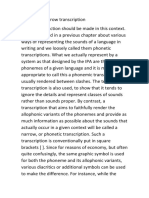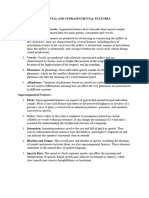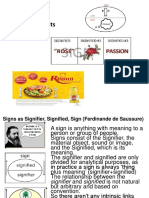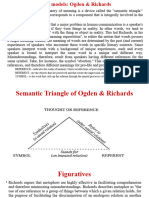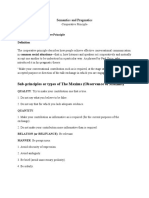0% found this document useful (0 votes)
321 views17 pagesSemiotics in Communication
This document discusses communication and semiotics. It defines communication as the exchange of information between individuals through symbols and signs. Verbal communication involves speaking, while non-verbal communication conveys meaning through facial expressions, gestures, eye contact and more. Semiotics is introduced as the study of symbolic communication, focusing on how people interpret and create meaning from signs. The importance of semiotics in communication design is explained, with logos, illustrations and labeling provided as examples of how symbols are used to effectively convey intended messages and meanings.
Uploaded by
MedhaCopyright
© © All Rights Reserved
We take content rights seriously. If you suspect this is your content, claim it here.
Available Formats
Download as PDF, TXT or read online on Scribd
0% found this document useful (0 votes)
321 views17 pagesSemiotics in Communication
This document discusses communication and semiotics. It defines communication as the exchange of information between individuals through symbols and signs. Verbal communication involves speaking, while non-verbal communication conveys meaning through facial expressions, gestures, eye contact and more. Semiotics is introduced as the study of symbolic communication, focusing on how people interpret and create meaning from signs. The importance of semiotics in communication design is explained, with logos, illustrations and labeling provided as examples of how symbols are used to effectively convey intended messages and meanings.
Uploaded by
MedhaCopyright
© © All Rights Reserved
We take content rights seriously. If you suspect this is your content, claim it here.
Available Formats
Download as PDF, TXT or read online on Scribd
/ 17


